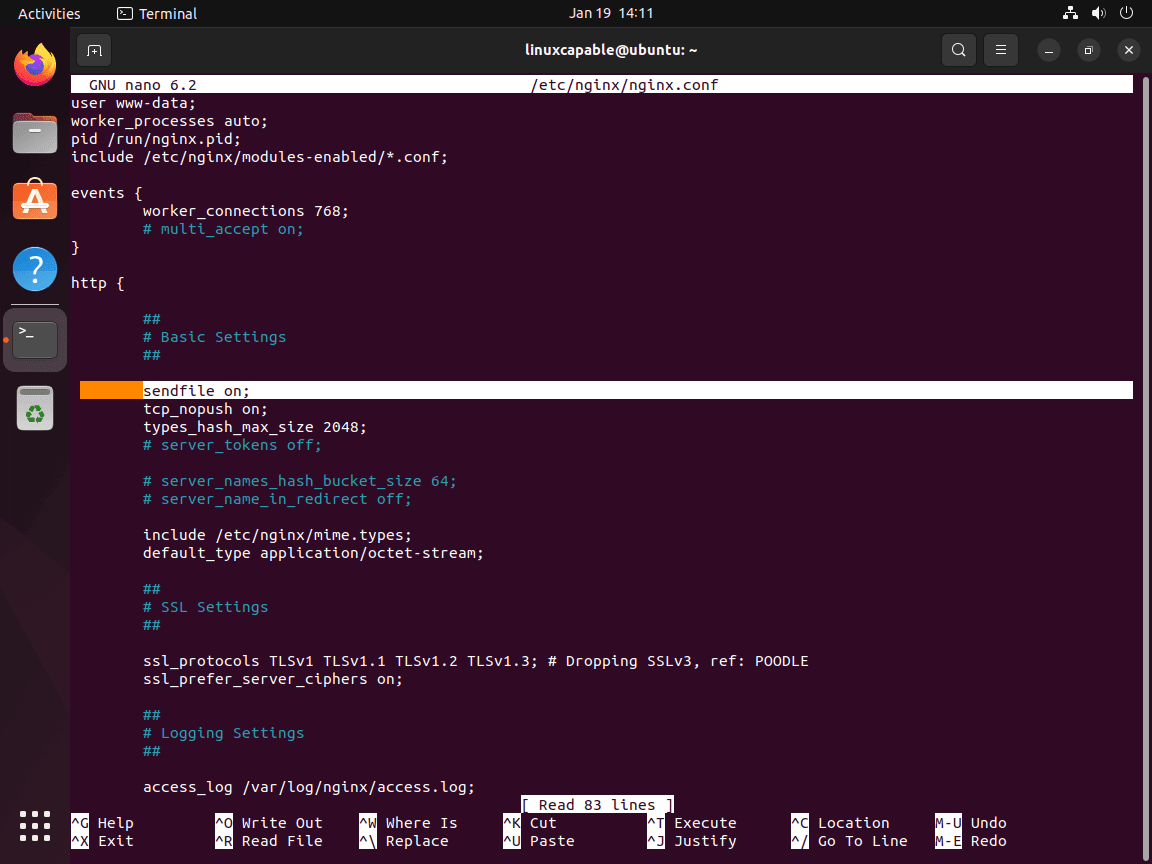The Sendfile directive in NGINX is a powerful feature that significantly enhances server performance by enabling efficient data handling, reducing server load, and supporting scalable configurations. By leveraging this directive, NGINX can directly transfer data from the filesystem to the network socket, bypassing the user space and minimizing CPU usage. This results in faster file delivery and improved overall performance, making it an essential optimization for high-traffic websites and applications.
The following guide will demonstrate how to enable the Sendfile directive in NGINX using command-line interface (CLI) commands on Linux or Unix-like systems. By following these steps, you can ensure your server handles data more efficiently, reduces load, and scales effectively to meet performance demands.
Enable Sendfile Directive in Nginx
Verifying Kernel Support for Sendfile
Before implementing the Nginx Sendfile Directive, it is crucial to confirm whether your system’s kernel supports the sendfile system call. Although this feature is commonly available, verification is a good practice.
Execute the following command to check for sendfile support:
grep SENDFILE /boot/config-$(uname -r)A positive confirmation looks like this:
CONFIG_SENDFILE=yActivating Sendfile in NGINX
To enable the Sendfile feature, access the NGINX configuration file. This file is typically found at /etc/nginx/nginx.conf.
Use a command-line text editor like Nano or Vim for this purpose:
sudo nano /etc/nginx/nginx.confWithin the HTTP block of this file, look for the sendfile directive. If it’s not present, add the following line:
http {
sendfile on;
...
}If sendfile is set to off (sendfile off;), change it to on or if it is missing, just add the line.

After modifying the file, save your changes and exit the editor.
Restarting NGINX to Apply Changes
Post-configuration, it’s essential to validate the NGINX configuration for any errors. Use this command to test the configuration:
sudo nginx -tThe expected output should confirm the successful validation:
nginx: configuration file /etc/nginx/nginx.conf test is successfulTo apply the changes, restart the NGINX server. Depending on your system, use one of the following commands:
sudo systemctl restart nginxor
sudo service nginx restartConclusion
This concludes our guide on optimizing your NGINX server with the Sendfile directive. We have discussed how to verify your system’s support for Sendfile, enable it in the NGINX configuration, and ensure proper functionality with a server restart. Implementing this adjustment can significantly enhance your server’s efficiency in handling static files. As a final recommendation, regularly monitor your server’s performance following these changes. Even minor adjustments can result in substantial improvements.


